
Major Scale Pattern 3
But, each scale degree has another name which is called the technical names of the scale. Here are the technical names and scale degrees of A major scale. 1st - Tonic - A. 2nd - Supertonic - B. 3rd - Mediant - C#. 4th - Subdominant - D. 5th - Dominant - E. 6th - Submediant - F#.

Major Scale Pattern
Major scale guitar patterns allow us to see notes within a major scale grouped together in positions on the guitar. Definitely learn these 5 patterns but practice them this way to see all the scale roots. FREE PDF: Top 3 Pentatonic Scale Patterns for more melodic soloing https://bit.ly/3lIQujx Weekly Lesson #71 FULL PLAYLIST OF THIS SERIES
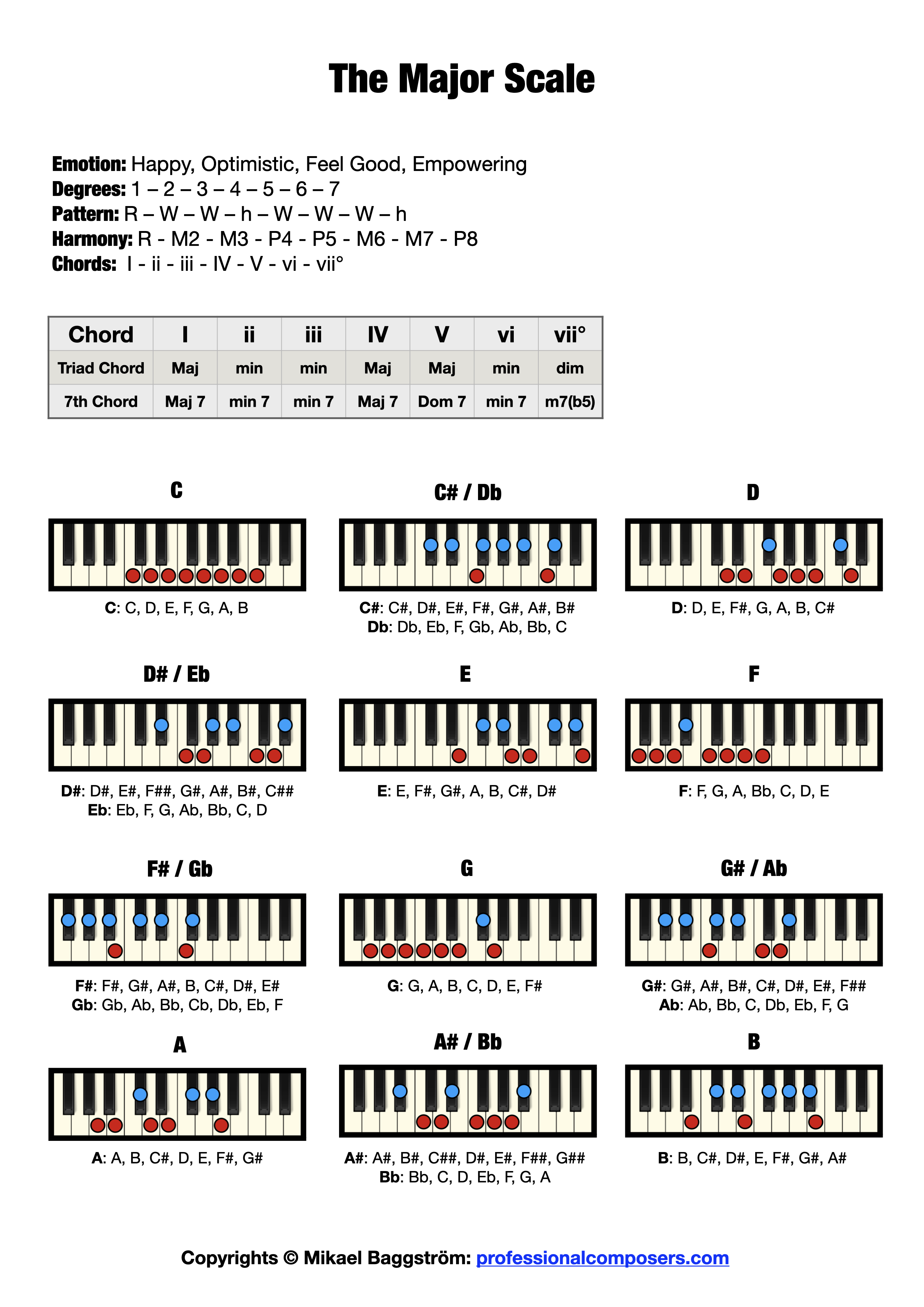
The Major Scale on Piano (Free Chart + Pictures) Professional Composers
Major Scale Formula Chord Relationships Two Ways to Form a Major Scale Single-Octave Patterns Box Patterns Practicing the Major Scale Definition of a Scale A scale is simply a set of notes arranged in order of pitch. They are named by the first note of the sequence. This is called the root note. Scales can ascend in pitch or descend in pitch.
Jeri's YOUkulele Notes Major Scale Pattern
The major scale has a happy, upbeat quality to it. The intervals of the major scale are as follows: 1 W 2 W 3 H 4 W 5 W 6 W 7 H 1. W = whole step (or 2 fret interval) H = half step (or 1 fret interval) The above is meant to show you the intervals of the major scale. Since the root is on the E note (open low E string), this is an E major scale.

Learn major scales piano, treble clef, charts, pattern/formula, chords Music theory lessons
The major scale (or Ionian mode) is one of the most commonly used musical scales, especially in Western music. It is one of the diatonic scales. Like many musical scales, it is made up of seven notes: the eighth duplicates the first at double its frequency so that it is called a higher octave of the same note (from Latin "octavus", the eighth).
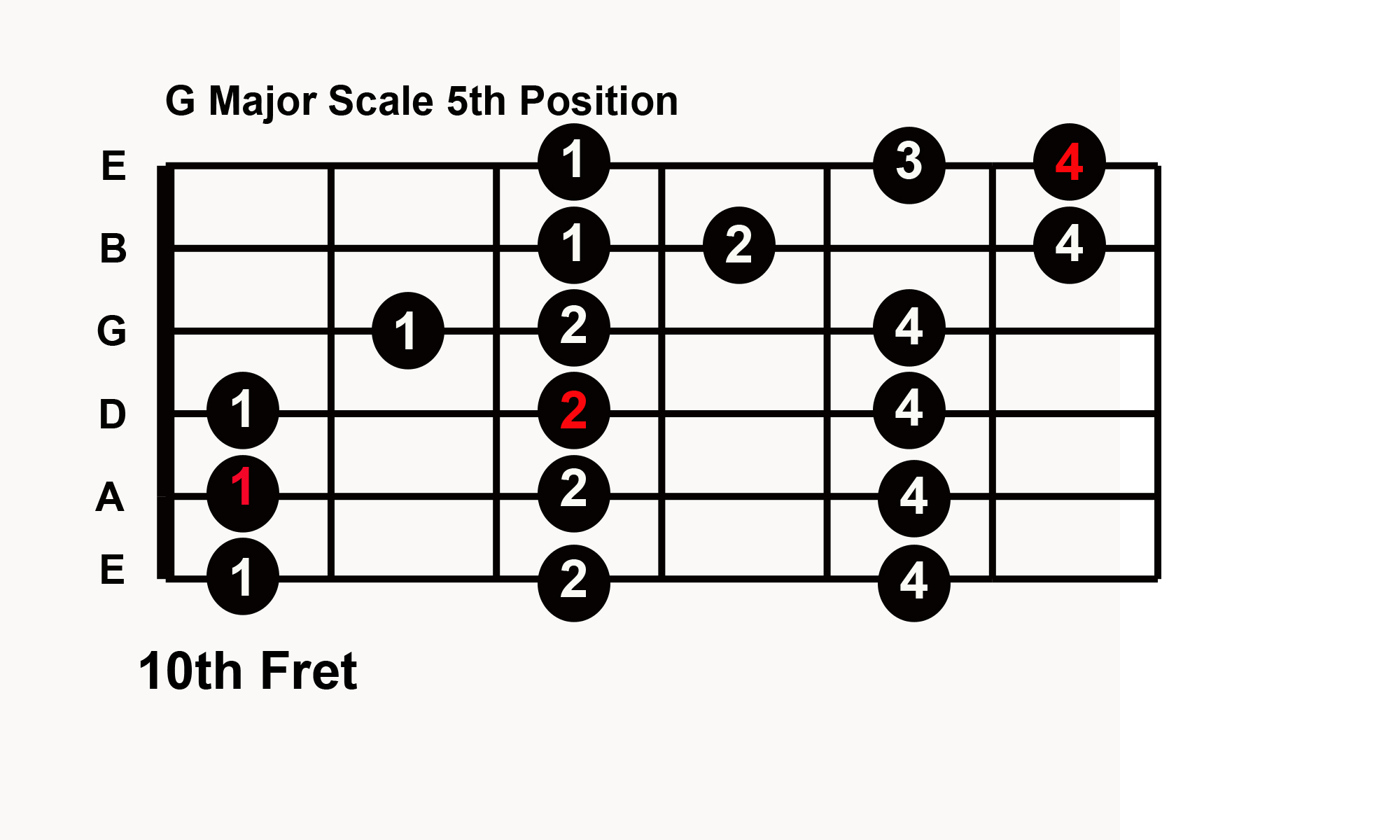
Guitar Solo Without Learning Notes with 5 Major Scale Patterns
A guitar scale pattern is a simple visual representation of the guitar fretboard. It shows where the fingers of the guitarist's fretting hand should be placed in order to play a certain scale. A scale is a linear sequence of notes that starts on a tonic note and ends on the same note one or more octaves higher than the start note.

Learn scales on guitar Major scales on Guitar
Learning the intervals of the A scale can give you a better grasp of variations of the A chord and relative chords. Intervals is a music theory concept that turns the notes of a scale into numbers one through seven. The root note — in this case, A — is the one (1); the B is two (2), and the C# is the three (3). Root Note (R): A. Major 2nd.

Printable Major And Minor Pentatonic Scales Guitar Chart
Major Scale Part 1: where everyone should start Play Guitar Scales Easily All Over The Fret Board - Amazing Trick For Beginners Sagar Roy
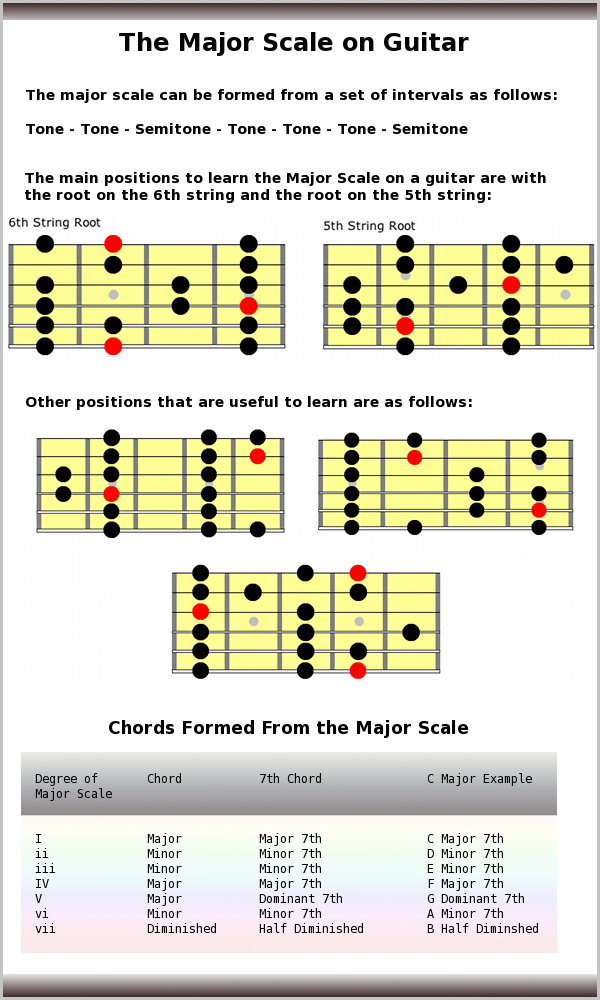
Major Scale Guitar Scales
1 octave A major scale guitar TAB showing the scale being played in open position. (Recommended left hand fingering has been provided.) You can extend the scale above to cover 2 octaves, as shown in the TAB / notation below: 2 Octave A Major Scale TAB An alternative way of playing a 2 octave A major guitar scale is shown below.
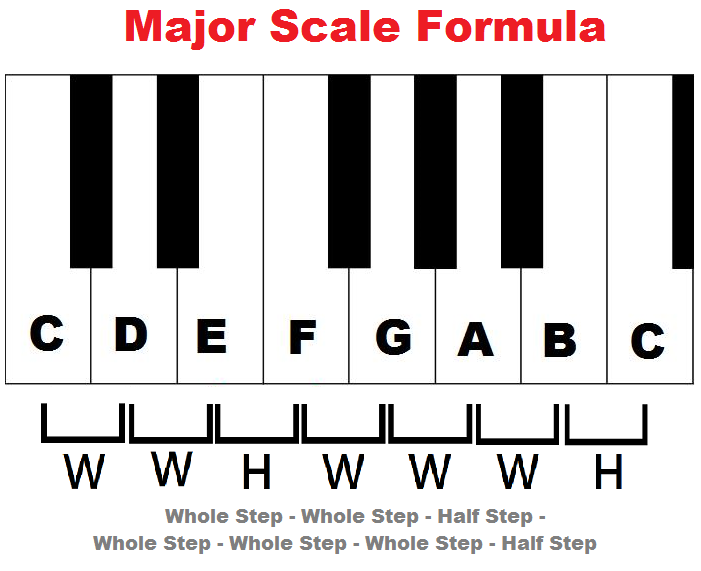
Learn major scales piano, treble clef, charts, pattern/formula, chords music theory
A Major scale for guitar. The A Major is a seven-note scale. Notes are displayed in the fingerboard diagram with blue color with the root notes indicated by darker color. The root notes are always A tones. In the two-octave pattern, the first root note is on the 6th string, 5th fret. Full fretboard.

Major scales on piano and keyboard. learnpiano in 2019 Easy piano, Piano lessons, Piano music
Pattern 5. Dive into the A Major Scale with Guitar Charts. Explore our interactive fretboard diagrams and listen to audio examples for each pattern. Ideal for guitarists seeking to understand and play the A Major Scale effortlessly. Perfect for both beginners and experienced musicians.

The 7 modes of the major scale Guitar lessons, Basic guitar lessons, Music theory guitar
On any major scale, the pattern will be: major, minor, minor, major, major, minor, diminished. You can either memorize that or learn that the intervals (distance in pitch between any two notes) of the scale dictate whether a major 3rd (3) or minor 3rd (b3) is used above a given degree's root.
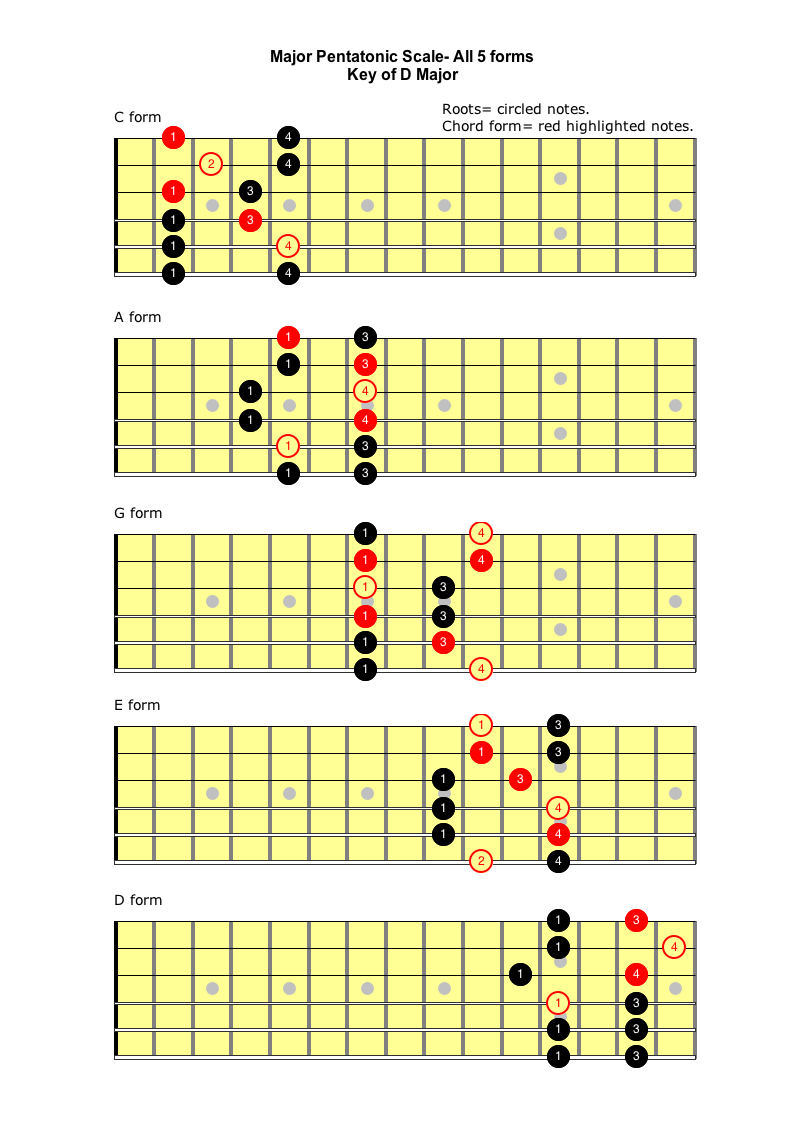
Major Pentatonic Scale Self Taught Guitar Lessons
The major scale is a 7-note scale, made up of a specific combination of half steps and whole steps. (As a quick review, a half step is the very next note on a piano away, a whole step is two notes away. Two half steps equals a whole step. Check out the lesson on semitones for a refresher.) Emotional Quality Take a listen to the sound of the scale:

The Major Scale The Most Important Guitar Scale to Learn
Major scale patterns for beginners: Open position patterns. The best major scale patterns to start off with are the basic open position patterns. These are the patterns that use open strings as well as fretted notes. We're going to look at open position major scale patterns in the keys of: C A G E and D. C major scale (open position) Of all.

Piano Scales How To Form Major Scales On Piano YouTube
Major scale guitar patterns allow us to see notes within a major scale grouped together in positions on the guitar. Definitely learn these 5 patterns but pra.
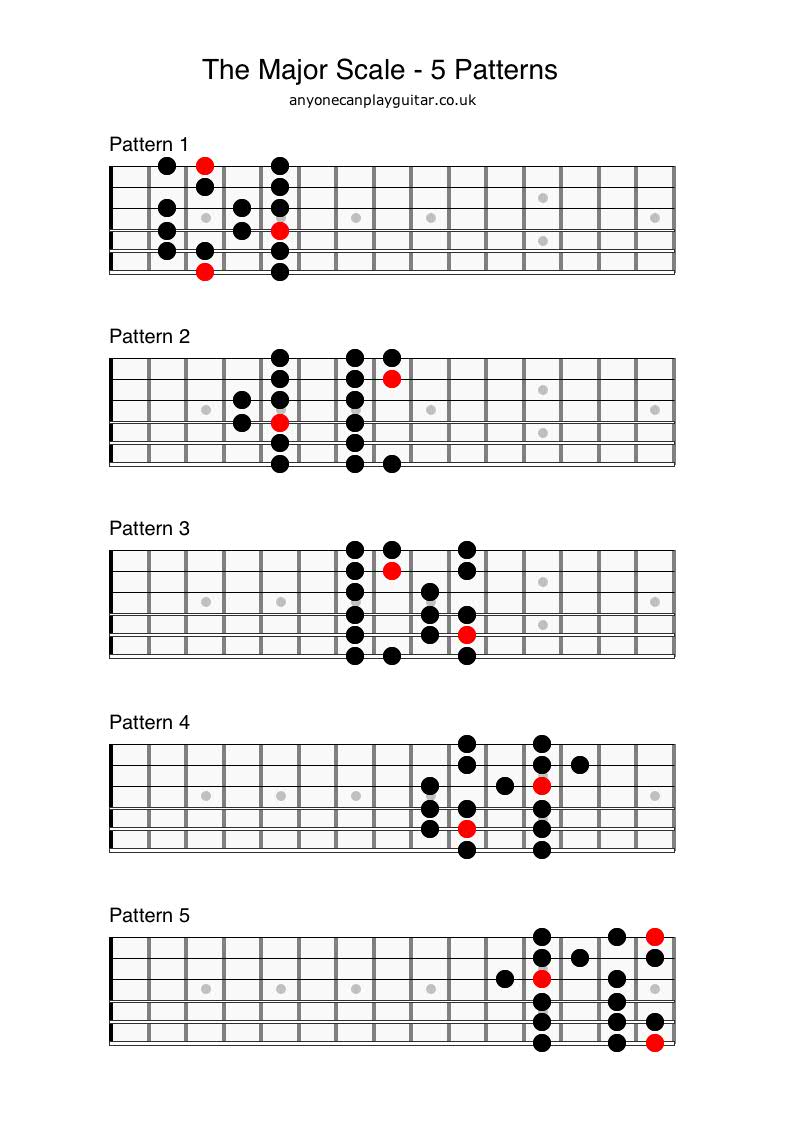
Learn scales on guitar Major scales on Guitar
The Major Scale The major scale consists of 7 notes and an octave note (the root note played an octave higher/lower). If we take a look at the G major scale, its notes are as follows: Listen to the audio to hear how the G major scale sounds: Major Scale Pattern of Steps